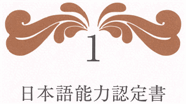When translating a document with formatting, such as a Microsoft Word document, you can’t always use the original source-language formatting in the translated language as is. This is especially true of italic type in Japanese. What works in italics in English does not work in Japanese. The formatting must be changed.
The main reason for this is Japanese text can become nearly unreadable when set in italic type. This is especially the case on low resolution monitors when displaying kanji in bold, italic fonts.
When translating English into Japanese, it is best to change the formatting for text in Japanese that was originally in italic type in English.
Here is a mini style guide of recommendations of how to format Japanese text that was translated from English set in italic type.
Emphasis
Use a Gothic bold-face type, or write the word in katakana if appropriate.
正しいのは、わたしだけです。
Another way to show emphasis is to use a well-known English phrase and write it in katakana.
それはマジックに違いない。
Titles of Books, Publications, Media, etc.
Use the Japanese double quotation marks to quote the name of a publication.
『異星の客』は、アメリカの1961年に書いた小説である。
Foreign Words
In English these would be written in italics. In Japanese, they will be written in either katakana or romanized type, which serves the function of designating it a foreign word.
Introducing or Defining Terms
Use the Japanese single quotation marks.
「iPad」とは、タッチパネルを搭載したタブレット型端末である。
Other
In other instances where italics are used in English, it is usually safe to use the Japanese single quotation marks.
In general, it is best to avoid italic type in Japanese. Certain Japanese typefaces don’t even have an italic font to begin with. It is very important to thoroughly proofread documents translated into Japanese for these types of formatting issues. What is natural in English can produce something almost unreadable in Japanese. And it will be a lot more natural to use something other than italics.
This also works the other way around when translating from Japanese into English. Where quotation marks and katakana etc. are used in Japanese should be changed into italics in the English translation where appropriate.




Sorry to comment on such an old post; however, I sometimes see dots or marks placed next to characters to be emphasized. Seems fairly common, at least for fiction, and at least when writing vertically.